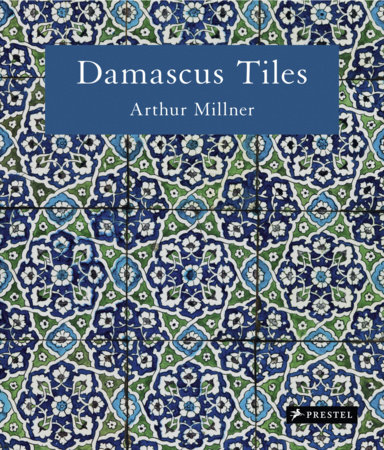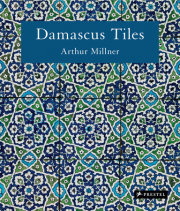One of art history’s previously overlooked treasures—the vibrant ceramic tiles of Syria and especially Damascus—are the subject of this fascinating study by a leading Islamic art expert. Architectural ceramic decoration is one of the most celebrated
manifestations of the arts of Islam. Spanning a period from the
13th to the 20th century, the tiles featured in this book exhibit
a rich range of influences from Persia, Turkey, China and even
Europe. A renowned specialist in the fields of Islamic and
Indian art, Arthur Millner explores the historical context that
allowed the uniquely creative achievement of Syrian craftsmen
to flourish, and why tiles from this region are less restricted
in artistic expression than those from better-known centers
of production. The complex and interconnected nature of tile
designs, techniques and color palettes is explored, highlighting
what is distinctive about Damascus ceramics and how they
relate to tiles produced in other parts of the Islamic world.
Finally, the author traces the journey made by many of these
tiles to the West, embellishing the interiors of wealthy clients as
Islamic art became both fashionable and influential in late-19thcentury
art and design.
manifestations of the arts of Islam. Spanning a period from the
13th to the 20th century, the tiles featured in this book exhibit
a rich range of influences from Persia, Turkey, China and even
Europe. A renowned specialist in the fields of Islamic and
Indian art, Arthur Millner explores the historical context that
allowed the uniquely creative achievement of Syrian craftsmen
to flourish, and why tiles from this region are less restricted
in artistic expression than those from better-known centers
of production. The complex and interconnected nature of tile
designs, techniques and color palettes is explored, highlighting
what is distinctive about Damascus ceramics and how they
relate to tiles produced in other parts of the Islamic world.
Finally, the author traces the journey made by many of these
tiles to the West, embellishing the interiors of wealthy clients as
Islamic art became both fashionable and influential in late-19thcentury
art and design.
About
One of art history’s previously overlooked treasures—the vibrant ceramic tiles of Syria and especially Damascus—are the subject of this fascinating study by a leading Islamic art expert. Architectural ceramic decoration is one of the most celebrated
manifestations of the arts of Islam. Spanning a period from the
13th to the 20th century, the tiles featured in this book exhibit
a rich range of influences from Persia, Turkey, China and even
Europe. A renowned specialist in the fields of Islamic and
Indian art, Arthur Millner explores the historical context that
allowed the uniquely creative achievement of Syrian craftsmen
to flourish, and why tiles from this region are less restricted
in artistic expression than those from better-known centers
of production. The complex and interconnected nature of tile
designs, techniques and color palettes is explored, highlighting
what is distinctive about Damascus ceramics and how they
relate to tiles produced in other parts of the Islamic world.
Finally, the author traces the journey made by many of these
tiles to the West, embellishing the interiors of wealthy clients as
Islamic art became both fashionable and influential in late-19thcentury
art and design.
manifestations of the arts of Islam. Spanning a period from the
13th to the 20th century, the tiles featured in this book exhibit
a rich range of influences from Persia, Turkey, China and even
Europe. A renowned specialist in the fields of Islamic and
Indian art, Arthur Millner explores the historical context that
allowed the uniquely creative achievement of Syrian craftsmen
to flourish, and why tiles from this region are less restricted
in artistic expression than those from better-known centers
of production. The complex and interconnected nature of tile
designs, techniques and color palettes is explored, highlighting
what is distinctive about Damascus ceramics and how they
relate to tiles produced in other parts of the Islamic world.
Finally, the author traces the journey made by many of these
tiles to the West, embellishing the interiors of wealthy clients as
Islamic art became both fashionable and influential in late-19thcentury
art and design.
Author
Back to Top
Notifications








